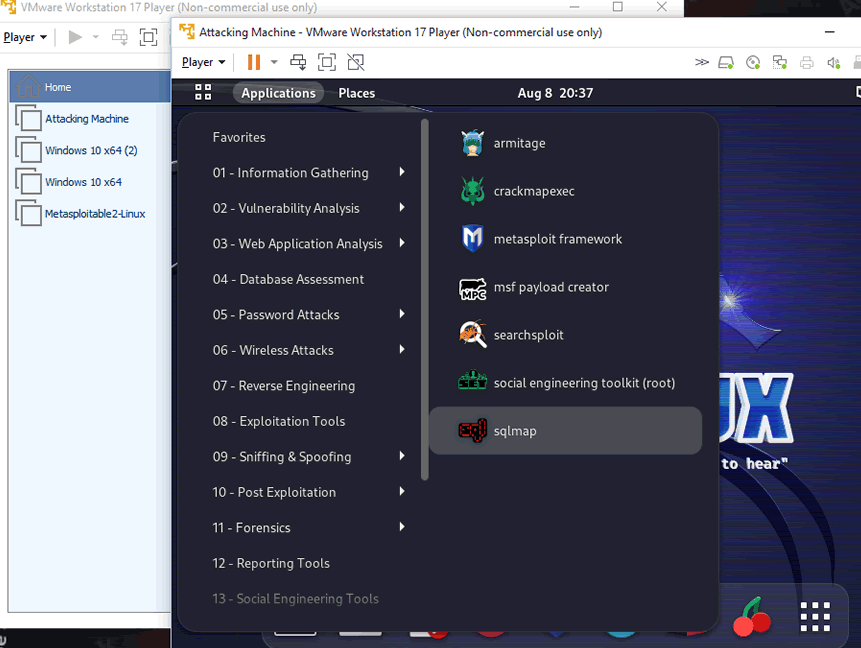




This article is a sub-topic under Virtualization Technology: Empowering Ethical Hackers And Red Teams For Cybersecurity Excellence
Penetration testing, often referred to as ethical hacking, is a crucial practice in cybersecurity. It involves simulating real-world cyberattacks to identify vulnerabilities and weaknesses in an organization’s systems, networks, and applications. To execute successful and secure penetration tests, virtual machines (VMs) play a pivotal role by providing a controlled and isolated environment for testers to operate within. This article explores the importance of virtual machines in penetration testing and how they contribute to safer and more effective assessments.
**1. Isolation and Containment:
One of the fundamental aspects of penetration testing is ensuring that the assessment activities do not disrupt or compromise the production environment. Virtual machines offer complete isolation from the host system, creating a sandboxed environment where testers can conduct various attack scenarios without affecting the actual infrastructure. This containment prevents unintended consequences and safeguards critical systems and data from accidental damage.
**2. Realistic Testing Environments:
Penetration tests aim to mirror real-world attack scenarios as closely as possible. Virtual machines allow testers to replicate target systems and networks accurately, including different operating systems, applications, and configurations. This realism enhances the validity of the assessment, enabling testers to identify vulnerabilities that may not be apparent in isolated lab environments.
**3. Multiple Scenarios and Platforms:
Organizations today operate in complex multi-platform environments. Virtual machines enable penetration testers to emulate diverse systems, from Windows and Linux to macOS and beyond. Testers can create custom virtual images, tailor-made for specific targets, and assess different attack vectors across various platforms, enhancing the comprehensiveness of the assessment.
**4. Efficient Snapshotting and Reverting:
The ability to take snapshots of VMs at different stages of the assessment process is a valuable feature for penetration testers. If an experiment goes awry or a system becomes unstable, testers can revert to a known good snapshot quickly. This feature encourages testers to experiment with various attack methodologies without the fear of causing lasting damage.
**5. Safe Malware and Exploit Testing:
Penetration testing often involves testing malware samples and exploiting vulnerabilities. Running these tests on actual systems could have catastrophic consequences. Virtual machines provide a safe environment for testing malware behavior, observing the impact of exploits, and studying attacker techniques without exposing the organization’s infrastructure to unnecessary risks.
**6. Scalability and Reproducibility:
For large-scale assessments or those involving multiple testers, virtual machines offer scalability. Testers can clone VMs to create identical environments for different team members. This ensures reproducibility in testing, enabling multiple testers to collaborate effectively and share findings in consistent environments.
**7. Legal and Ethical Considerations:
Penetration testing must adhere to legal and ethical guidelines. Using virtual machines helps ensure that the assessment activities stay confined within controlled environments. This minimizes the risk of inadvertently affecting external systems and networks, mitigating potential legal and ethical complications.
Conclusion:
Virtual machines have revolutionized penetration testing by providing a secure, flexible, and realistic environment for testers to simulate cyberattacks. The isolation, containment, and versatility offered by virtual machines contribute to the overall effectiveness of penetration testing. Organizations can identify vulnerabilities, weaknesses, and potential threats with greater accuracy, enabling them to proactively strengthen their cybersecurity defenses. In the dynamic landscape of cybersecurity, where threats constantly evolve, virtual machines remain an essential tool in the arsenal of ethical hackers and penetration testers striving to safeguard digital assets and information.
Read More
1. Virtualization and the Ethical Hacker’s Playground: Explain how virtualization creates a secure playground for ethical hackers and red teams to practice their craft. Discuss the benefits of isolating testing environments and utilizing virtual snapshots for quick recovery during intensive hacking exercises.
2. Unleashing the Red Team: Real-World Simulations through Virtualization: Explore how red teams use virtualization to conduct real-world simulations of cyberattacks. Discuss the strategic value of creating diverse virtual scenarios to identify vulnerabilities, assess risks, and enhance an organization’s overall cybersecurity posture.
3. The Role of Virtual Machines in Penetration Testing: Highlight the significance of virtual machines in penetration testing. Discuss how ethical hackers leverage VMs to perform penetration tests on various operating systems and applications while keeping the production environment safe from unintended consequences.
4. Building an Agile and Scalable Hacking Infrastructure: Guide ethical hackers and red teams on building an agile and scalable hacking infrastructure using virtualization. Discuss the benefits of cloud-based virtualization and orchestration tools in managing larger-scale engagements and assessing complex network topologies.
5. Virtualization and C2 Servers: Navigating the Nexus of Control and Security: Amidst this dynamic environment, the fusion of virtualization and Command and Control (C2) servers emerges as a critical nexus, offering both enhanced control and strengthened security measures
6. The Future of Virtualization for Ethical Hackers and Red Teams: Look ahead to the future of virtualization technology and its potential impact on the evolving landscape of ethical hacking and red teaming. Discuss how virtualization will continue to evolve to meet the growing demands of the cybersecurity industry.

Web Developer | Cybersecurity Advocate | Offensive Security Enthusiast
Passionate about Personal Transformation and Offensive Security, I’m Ehinomhen Okaiwele—a dedicated Web Developer and Cybersecurity Advocate. My mission is clear: elevating the “Cybersecurity Consciousness” of fellow Africans. Through my journey, I aim to empower individuals, fostering a safer digital landscape for our community. Join me in this transformative endeavor.